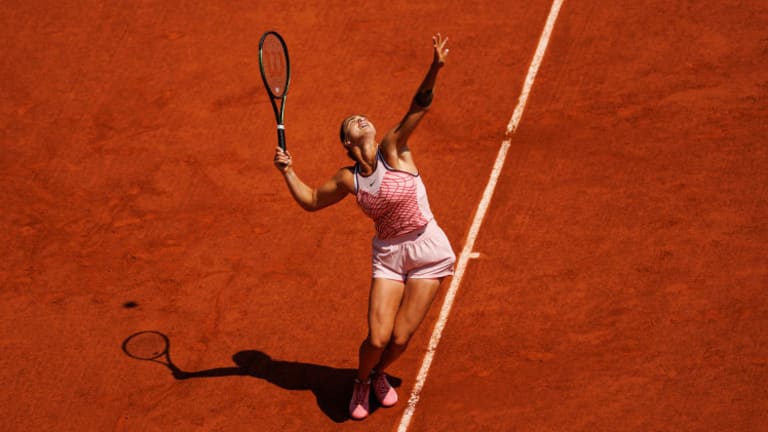Your Game
Quick Tip: Like a quarterback preparing to throw, create more width in your service motion
By Feb 15, 2024Your Game
Tecnifibre releases special-edition Danille Collins pickleball paddle
By Oct 04, 2025Your Game
Racquet Preview: Solinco unveils Blackout V2
By Sep 24, 2025Your Game
Geared Up: Victoria Mboko is turning heads in all Wilson
By Sep 23, 2025Your Game
Racquet Review: Dunlop CX 200 (18x20) Limited Edition
By Sep 17, 2025Your Game
Racquet Review: Wilson Ultra Pro 99 v5
By Sep 14, 2025Your Game
Yonex goes dark on Percept racquet line
By Aug 28, 2025Your Game
Babolat gives the Pure Strike a makeover with carbon grey cosmetic
By Aug 25, 2025Your Game
Head launches second edition of Speed Legend series
By Aug 24, 2025Your Game
Asics releases its Night Energy Collection
By Aug 23, 2025Quick Tip: Like a quarterback preparing to throw, create more width in your service motion
Getting the hitting elbow in the right spot will result in more pace and consistency in your serve.
Published Feb 15, 2024
Advertising

Aryna Sabalenka's hitting elbow extends back and maintains a 90-degree angle.
© © TENNIS PHOTO NETWORK, TEL- +61 433 754 488 TEL - +44 7843 383 012 TEL - +1 646 288 5771 MIKE@TENNISPHOTONET.COM

Justin Herbert's throwing mechanics have a lot in common with Aryna Sabalenka's service motion.
© Getty Images